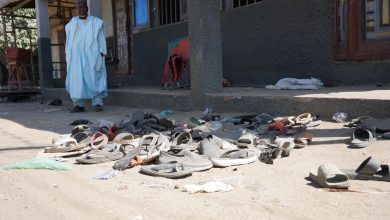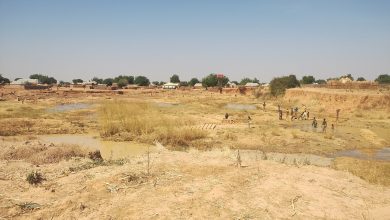Boko Haram Steps Up Attacks In Cameroon’s Far North
There has been an increase in Boko Haram attacks on Cameroonian villages in recent months, reports say.

Boko Haram has increased its attacks on civilians in Cameroon in recent weeks, forcing thousands of people from their homes, according to reports.
The Cameroonian military’s elite Rapid Intervention Battalion have been pushing back against attacks on civilians in the Far North region, although the militants have so far found ways to evade the military and attack unprotected villages.
Recent media reports show the number of attacks carried out between April 1 and May 25 in the Far North region by Boko Haram militants have increased.
In recent years, as the dry season comes to an end, terrorists have been known to launch more attacks on villages and hamlets to seize supplies for the rainy season, when mounting attacks becomes more difficult.
Over 4,000 people have been forced from their homes in the region in recent weeks, a new report from the UN says.
Civilians in Cameroon have been the subject of regular violent attacks since 2012. Militant activity spills over Nigeria’s border where the conflict started.
Seizing goods
Boko Haram carried out four attacks in communities across the Far North region in January, it was reported.
Some attacks took place simultaneously, indicating a degree of strategic planning on the militants’ behalf. They burnt down houses, one civilian was killed and another wounded.
The campaign of attacks began to spread in February and March, becoming more frequent, reports suggest.
In April, Boko Haram carried out 11 attacks on at least 14 villages in the Far North, killing eight, and injuring ten.
They set four villages on fire and seized goods worth millions from locals. Nine people were also kidnapped.
This number increased in the month of May as they have so far recorded 13 attacks on over 17 communities.
Nine people were wounded in the attacks, six communities burned, and there was a rise in the use of improvised explosive devices (IEDs). They planted more than six booby trap type devices, and the population was lucky no one was caught in an explosion.
The BIR said they had intervened to disrupt the planting of IEDs in some communities. They also freed 21 persons held hostage by Boko Haram, according to press releases.
Thousands flee
Over 4,000 people displaced in the Far North region were displaced in March, due to violence and insecurity, a new report published by the United Nations Humanitarian Agency OCHA says.
Following the series of fires set on homes across the Far North, many are left stranded. OCHA says they are in need of a rapid response so as to provide shelter, food, education to the desperate population.
Most attacks took place in Mayo-Sava, Mayo-Tsanaga and Logone and Chari divisions of the Far North region. Amchidé and Kolofata are the most affected villages.
A community representative of Hile- Alifa in Logone and Chari said they were witnessing increased Boko Haram attacks because the government had called back two Units that were occupying two control posts in the area.
“Since these posts were removed, attacks have multiplied in the area. Other neighbouring villages have moved to the headquarters of Logone and Chari due to these attacks”, said Herale Assa.
“They have all lost their goods, so they are forced to move”, he added.
Response plan
The International Committee of the Red Cross early this year highlighted the problem of displacement in the Lake Chad Basin, due to the Jihadist attacks.
Its Vice President, Dr. Gilles Carbonnier told the international community of the 11.3 million people in need of assistance in the Lake Chad Basin, at least 3 million are displaced, forced to flee their homes because of the violence.
Earlier this month the government of Cameroon and the humanitarian community launched an appeal for more than US$407 million to meet the needs of 2.7 million of the most vulnerable people in the country this year.
The 2023 Humanitarian Response Plan includes protection services and life-saving assistance for people suffering the effects of violence, natural disasters, climate shocks and disease outbreaks.
Some 4.7 million people are need humanitarian assistance. Over 2 million people are internally displaced, refugees or returnees.
Support Our Journalism
There are millions of ordinary people affected by conflict in Africa whose stories are missing in the mainstream media. HumAngle is determined to tell those challenging and under-reported stories, hoping that the people impacted by these conflicts will find the safety and security they deserve.
To ensure that we continue to provide public service coverage, we have a small favour to ask you. We want you to be part of our journalistic endeavour by contributing a token to us.
Your donation will further promote a robust, free, and independent media.
Donate HereStay Closer To The Stories That Matter




